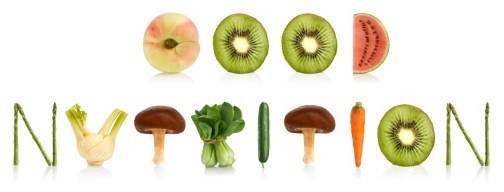
Powerful Veggies
It is quite obvious by now that the one food group you should be consuming the most of are vegetables. It is also the one food group I can think of that gets no bad press either! The diseases that vegetables prevent would not fit into this blog there are so many. I personally like to think of vegetables as medicine, since they essentially are and some of the compounds are hard to pronounce as well! There are some veggies that are a better choice as far as getting the most nutrition from each serving. Most people don’t consume anywhere near enough of these foods and could use at least 2-3 cups a day of vegetables. If you are picky about a variety of different vegetables then I suggest you load up on the ones you do like on a daily basis, although technology today has made it quite easy to search different recipes with vegetables to find ones that are healthy and actually taste good! An optimal nutrition goal would be 10 different vegetables consumed a week, but 5 is a great start! Here are my top 10 healthy vegetables and why.
Watercress– This aquatic plant packs more nutrition than any other vegetable out there. Just 1 cup of this plant provides 22% of daily value of vitamin A, 24% of vitamin C, 106% of vitamin K, 4% of calcium, 4% of manganese, and 3% of potassium all in just 11 calories.Two other significant nutrients found in watercress are the phytonutrient isothiocyanate which will help fight carcinogens in your body, as well as the antioxidant gluconasturtiin, which can significantly decrease DNA damage. From alzheimer’s to cancer to diabetic neuropathy to lowering blood pressure to helping prevent bone fractures, this is one vegetable we all should be consuming. I like to put watercress in my veggie shakes, but it can also be put in salads, omelettes, soups, sandwiches, and even used as a side in taco’s.
Spinach– It is hard to compile a list of the most nutrient dense vegetables without including spinach. Popeye was right about consuming this veggie! One cup of spinach has 100% of daily value of vitamin K, 56% of vitamin A, 15% of Folic acid, 14% of vitamin C, 6% of magnesium, 5% of potassium, 4% of iron, 41 mg of omega 3, as well as 5 grams of protein. Spinach also has a dozen different flavonoid compounds that protect against inflammation and cancer, as well as the carotenoids lutein and zeaxanthin that help ward off different eye diseases. Spinach can be eaten a variety of ways in shakes, salads, omelettes, side dishes, soups, dips, and sandwiches.
Avocado– Technically speaking avocado’s are a fruit, but most people think of it as a veggie so I decided to put it on my list. Avocado’s are a powerhouse vegetable that should be consumed on a weekly basis, if not daily. This oval shaped fruit(or is it a veggie?) is loaded with nutrients, but the ones that stand out are its fiber content (1 avocado has 15 grams,) its potassium content (1 avocado has 1000 mg, and its fat content has a whooping 30 grams! Now we all know by now that fat is not the villain it was once made out to be. Yes avocados are loaded with calories ( 1 avocado has 300,) but 2/3 of the fat it contains is monounsaturated fat which has a lot of benefits and most of us don’t get enough. Monounsaturated fats are good for lowering cholesterol levels, decreased chance of breast cancer, lowers risk of heart disease and stroke, arthritis, regulate insulin levels, and help with fat loss. Yes, they are high in calories but switching the amount of carbohydrates you eat to a diet higher in fats will help you become more of a fat burner (discussed in prior blog.) Avocados are the tastiest veggie on this list hands down. Avocado’s can be used in a variety of different foods like shakes, omelettes, mexican dishes, burgers, sandwiches, soups, or just plain with a spoon!
Broccoli– This cruciferous vegetable has been my bread and butter for well over 15 years now and for good reason! Broccoli is the king of vitamin K ( 240% daily value) and vitamin C (135% daily value.) Other nutrients packed in this powerful vegetable are folate, vitamin E, omega 3, magnesium, and zinc. The compound found in broccoli, glucosinolate helps suppress one of the strongest inflammatory molecules in our body which over time decreases our chances of disease. Broccoli also contains sulforaphane, which has shown promise in research on alzheimer’s, cancer, spinal cord injuries, and gut health. I like to eat my broccoli with eggs, but other ideas for consumption are salads, soups, side dishes, pizza, as well as hundreds of different recipes!
Swiss chard– Easily the prettiest vegetable on this list, but even more beautiful on the inside! Swiss chard can be used in salads, sandwiches, as well as in a variety of different recipes. I use it in my shakes on a daily basis due its specific flavor. The sodium content is slightly higher in swiss chard than most other vegetables which can really enhance the flavor. This leafy green is packed with vitamin A, vitamin C, vitamin K, magnesium,potassium, and manganese. Swiss chard contains betalain which is a powerful phytonutrient with antioxidant, anti-inflammatory, and detoxifying properties. Insulin resistance has also shown to benefit from swiss chard consumption by containing syringic acid which is found on its leaves.
Cabbage– Another cruciferous vegetable that is packed with nutrition. Like broccoli, cabbage is packed with sulforaphane, as well as vitamin K, vitamin C, vitamin B6, potassium, fiber, and copper amongst the many key nutrients. Cabbage also contains sinigrin, which is a glucosinolate that has shown to help prevent cancer, help with digestion, and provide cardiovascular support. I have eaten cabbage in various forms like pizza, soups, taco’s, but my favorite is to make sauerkraut. It is easy to make and not only can give you all the heavy artillery nutrition like I listed above, but the fermentation process will provide a tasty probiotic as well.
Kale– This cruciferous vegetable seems to be the most popular with the shake drinkers out there today! Like many others on this list, kale is loaded with nutrients but is noted for its high concentrations of vitamin K, vitamin A, vitamin C, manganese, copper, fiber, calcium, potassium, and vitamin E. Kale has strong anti-inflammatory, antioxidant, and cancer preventive benefits due to its glucosinolate content. Kale also plays a role in our body’s cellular detoxification process which helps with digestion, weight loss, and helps prevent chronic diseases. I like to add kale to my shakes, but I have made it with lasagna, salad, baked kale chips, sandwiches, soup, and eggs.
Romaine– This leafy green is one of the more common in most households on my list. Romaine lettuce is known for its high concentration of vitamin A, vitamin K, molybdenum, potassium, copper, biotin, and iron. Romaine also has 32% of daily value of folate which provides support for your brain, nervous system, cardiovascular system, and reproductive health in women. Known for its use in salads, romaine can be used in all kinds of lettuce wraps like chicken, steak, tomato, and cheese to name a few.
Parsley– Although technically parsley is an herb, I decided to add to my list due to its diversity with different foods to eat, and its density of nutrients. Parsley contains the phenylypropene, myristicin that has been shown to increase the actions of glutathione which is a major detoxifier in our body. Other benefits of parsley include protection from osteoporosis, arthritis, improved heart health, improved digestion, and even help with bad breath! Parsley can be consumed in virtually anything whether it be a shake, eggs, salads, chicken, steak, pork, dips, soup,etc.
Collard Greens– If you grew up in the south then you have probably had a plate of collard greens before! This leafy green much like the others above is high in vitamin K, vitamin A, vitamin C, fiber, calcium, choline, iron, copper, magnesium, and omega 3. In a recent study on cholesterol, collard greens actually outperformed kale, broccoli, and cabbage due to its ability to bind bile acids in the digestive tract. Collard greens also have antioxidant, anti-inflammatory, and provide cardiovascular support. There are numerous ways to consume collard greens, but I like mine best sautéed with a little bit of garlic and olive oil, or you can put in a shake, eggs, taco’s, and even soup.


